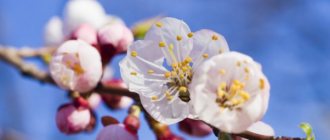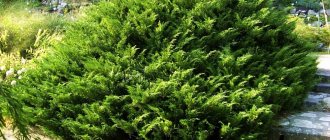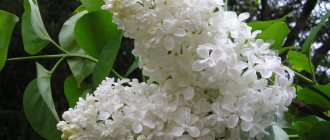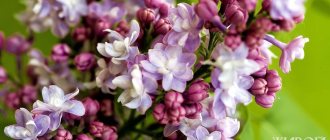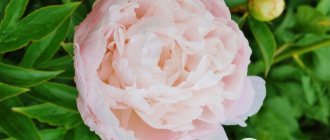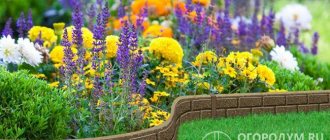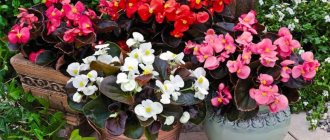Decorative spruce is used by many landscape design specialists to decorate gardens, parks and areas in front of public buildings. This plant has recently begun to be used to decorate summer cottages. There are many varieties of spruce with needles of dark green, emerald or blue color. There are dwarf and slow-growing trees. Thanks to the variety of species and varieties of spruce, it is easy to select plants for various landscape design projects based on the description and photo.
Types of fir trees
In total, 45 species are included in the genus Spruce. In nature, conifer grows on rocky or sandy soil, and is sometimes found in wetlands. Spruce mainly grows in regions with temperate or cold climates. The mountainous regions of China are considered the homeland of spruce. Ephedra is undemanding to growing conditions. It tolerates long-term lack of moisture and harsh, frosty winters. Certain types of spruce grow successfully in conditions of high soil moisture and can withstand polluted air in cities.
Norway spruce
The size of the tree is 50 m. The large plant has a pyramid-shaped crown with a sharp tip. Its shoots with ends bent upward stretch to the sides or are directed diagonally downward. The tetrahedral needles, up to 2.5 cm in size, are colored in a shade of lush green and have a shiny surface. The fruits of spruce are elongated cones. At the ripening stage, they change their shade from green or purple to brown. The species grows mainly in the European part. Hardy trees do not require extensive care.
Frohburg
This unusual weeping spruce, bred in Switzerland, has a long, straight trunk. Frohburg belongs to the medium-sized species. The size of a ten-year-old plant is from 2 to 4 m. This tree's branches are sloping and touch the surface of the ground. As they grow older, they spread along the ground in the form of an unusual, beautiful trail. The short, stiff needles are colored light green. Unripe fruits have a greenish-crimson color. This variety of common spruce is purchased for solitary cultivation.
Ohlendorffy
A small plant with a dense crown was bred in Germany. Its height at the age of ten does not exceed 2 m. Development is very slow. The annual increase in height reaches from 3 to 6 cm. Olendorfi has a wide crown. Near the ground it is round, and from above it becomes pyramidal, and has several tips. Dense, curved upwards at the ends, shoots grow towards the sides. They are densely dotted with green needles with a golden tint. The plant tolerates lack of sunlight well. It is placed in mixborders, on an alpine hill.
Akrokona
The variety was bred in Finland at the end of the last century. The Christmas tree has a short and wide pyramid-shaped crown. With a tree height of 4 m, its diameter is 3 m. Young specimens of this species have a compact, round shape. Unlike other varieties, Akrokona begins to bear fruit early. At the ends of the branches, small cones of lilac-crimson color appear, decorating the plant.
On a note! On the shoots of the first year, the needles have a grassy tint. The color then changes to a dark green, creating an unusual contrast. Akrokona is planted in solitaire plantings or as decoration for small gardens.
Serbian spruce
The tree grows tall. It has a columnar or narrowed cone-shaped crown. The top of the Serbian spruce is pointed. The dark green needles of the plant are slightly flattened. On the glossy surface on the reverse side, a pair of white stripes with a silver tint are visible. Fruits in small blue-black cones.
This species grows well in any soil, tolerates poor climatic conditions, and withstands urban air pollution. In its natural environment, Serbian spruce grows in the mountains of the Balkan Peninsula.
Tui
New shades can be added to the coniferous composition with the help of some of the varieties of western thuja. After all, thujas are diverse, unpretentious, reproduce well and therefore usually cost less than spruce and pine trees. And they don’t even inject themselves! And they also have a lot of varieties with bright annual growths. True, thujas will not be able to “present a surprise” - they do not grow in waves, like spruce and pine trees, but gradually throughout the season. But their color also remains from spring to autumn.
The best varieties:
Western thuja (Thuja occidentalis): 'Aureospicata' (tall, with golden tips of shoots), 'Stolvijk' (medium, with variegated yellow-white growths), 'Anneke' (compact, golden).
Important
All of the listed conifers are completely winter-hardy and have been successfully tested in gardens in central Russia.
'Maygold. Photo: From personal archive/ Elena Kozhina
Varieties of spruce trees according to growth vigor
Most spruce species in nature are large trees, growing up to 60 m tall. Over many years of breeding work, the proportions of tall plants have been brought to perfection. Many attractive medium-sized crops and decorative varieties of small sizes have also been obtained.
Common tall spruce trees:
- The Columnaris variety is a tree with a narrow column-shaped crown. It has short main shoots directed horizontally, strewn with dark needles with a glossy sheen. Trees grow by 30 cm per year and grow up to 17 m. Young specimens are sensitive to sunlight and frost.
- Spruce Iseli Fastigiata grows up to 12 m, increasing annually by 20 cm. It has a proportional crown in the shape of a cone up to 3 m wide. Skeletal shoots grow horizontally upward. Developing branches and side branches grow vertically. Green needles have a blue tint. Plants are grown in limited areas.
Of the medium-sized varieties, the following are often found:
- The Christmas Blue variety grows to a height of 5 m and forms a crown 1.5 m in diameter. The crown is cone-shaped with horizontally growing skeletal shoots, evenly covered with lateral shoots. The bluish elastic needles grow radially. The variety is grown in hedges or together with other conifers.
- Spruce Pendula Bruns stretches up to 6 m at a moderate pace. The diameter of the crown is up to 1.7 m. The straight main trunk bends slightly at the top. The branches grow downwards, close to the trunk, at the tips they bend slightly upward. They form a continuous trail on the ground surface. The needles are dark in color with silver stripes underneath.
- The Kruenta variety is called “red” because of the purple-tinged growths. Over time, the color of the needles changes to the traditional green. The trees grow at an average rate up to a height of 4 m. The lush crown has the shape of a pyramid and consists of skeletal shoots growing diagonally upward and drooping lateral branches.
Decorative low-growing varieties:
- The dwarf Goblin spruce looks like a small tussock of bright green color. It does not have a pronounced trunk and consists of short skeletal branches. The development rate is very low and amounts to 3 cm per year. In adult Christmas trees, the height does not exceed 60 cm.
- The Lucky Strike variety has a pyramid-shaped crown. It stretches up to 120 cm and 80 cm in diameter. The branches grow densely, but unevenly, diagonally upward. Dark needles have a glossy shine. Developing branches are brighter, with a yellow tint.
- The Blue Pearl variety grows up to 60 cm. A mature plant has a cushion-shaped crown or a cone-shaped crown expanded at the bottom. Dense branches grow in different directions, strewn with vertical lateral shoots.
On a note!
Decorative spruce trees are often used in the arrangement of hedges, for landscaping suburban areas and decorating the territories of administrative buildings. Dwarf varieties look good when planted on an alpine hill, in rockeries and mixborders.
Staghorn sumac or vinegar tree
The streets of seaside resorts are decorated with palm trees with bare brown stems and spreading crowns. And on vacation in Abkhazia, in addition to these, there were “palm trees” that were unlike guests from the tropics. They resembled our rowan trees, more like willows, gently bending over a pond, whose branches almost touched the water. The same long, narrow leaves, only larger in size, are located oppositely on an axis reaching almost 60 centimeters. One complex leaf contains up to 35 simple leaves. Bright red inflorescences at the top, reminiscent of giant torch-shaped Christmas decorations, decorate these trees.
Staghorn sumac, or Vinegar tree (Rhus thyphina). © Omar hoftun
Some time later, I saw Abkhazian “palm trees” while visiting the country house of my friends. These trees grew along the central alley, causing admiration and, to be honest, the envy of some visitors. At the beginning of October the weather was excellent, and entire branches glowed crimson, turning green. And in winter, after the leaves fell, bright scarlet candle torches stood out clearly among the white silence.
I was in seventh heaven, begging for a couple of shoots for my summer cottage. And now my neighbors and I have the same alley. Since this plant reproduces vegetatively, by root shoots, the sprout is often located very far from the mother plant.
At first I didn’t have time to distribute it to everyone who wanted it, but now I offer it myself, since it can take up the entire area in a short time.
Inflorescence of Sumac staghorn. © Roberto Verzo
For a long time I didn’t know the correct name. It turns out that this is not a palm tree, but the Staghorn Sumac (Rhus thyphina), one of the species of the Sumac genus, the Sumacaceae family. For a dacha where I visit, it is ideal. Grows on any substrate without requiring fertilizers. And if you feed and water it, it will generously reward you with juicy foliage and fruits.
Sumac can survive without water for a long time and is drought-resistant. You want to stroke its shoots; they are covered with fluff - a waxy coating that protects the plant from the scorching rays of the sun. What will the sun do to him if he is from North America?
Staghorn sumac. © Crusier
Local residents used the fruits of the staghorn sumac, which have a very sour taste, to prepare drinks and seasonings. A decoction of fruits replaced vinegar. That's why they called this tree vinegar or vinegar . By the way, the fruits ripen only on female specimens; this is a dioecious plant. To ensure pollination occurs, it is customary to plant male and female trees in pairs. Bright red dye was also obtained from the fruits of the Staghorn Sumac for dyeing fabrics and decorating ritual dishes. The bark of this tree, containing tannins, was used in folk medicine as an astringent and helped with bleeding. It was also used in tanning leather.
Medicinal properties
For treatment, it is often not decorative species that are used, but common spruce. Unripe cones, young, developing branches and needles of the plant have healing properties. They contain a lot of essential oils and tannins. It contains high concentrations of vitamins and microelements, resins, phytoncides, and fatty oils. Products prepared on the basis of herbal components eliminate inflammatory processes in the respiratory system, treat the urinary tract, and sinusitis. A decoction of spruce branches and buds is added to the bath to treat dermatological and joint diseases.
Freshly brewed tea from spruce buds is rich in vitamins. It is used instead of regular drinks, and also to treat stomach ulcers. To prepare the infusion, grind 40 g of pine needles and mix with 250 ml of boiled water. Boil everything over low heat and then leave to brew for 20 minutes. The drink is drunk throughout the day.
Spruce needles contain a high concentration of iron, potassium, phosphorus, and vitamins. They also contain carotene and ascorbic acid. These components prevent the development of scurvy and periodontal disease. Preventive pastes, bath extracts, and products containing chlorophyll and carotene are made from pine needles. Camphor is made from the oily ether of spruce, which is used for diseases of the cardiovascular system. Steam baths with the addition of pine oil treat the throat and bronchi.
Spruce needles purify polluted city air. Dust and pathogenic microorganisms settle on it and stick to the wax coating. The phytoncides released by spruce heal the body, facilitate breathing, stimulate blood flow, and have a beneficial effect on the nervous system.
Brief characteristics and classification
Conifers are a class of trees or shrubs belonging to the phylum Gymnosperms, which includes about 600 species.
- These are predominantly trees that reach the highest heights in the world (mahogany grows up to 100 meters).
- The core of conifer wood is weakly formed; almost the entire mass of the trunk is formed from secondary wood.
- The leaves are small, needle-shaped, scaly, and rarely fall annually (larch). Very rarely the leaves are large and flat. The leaf is represented by a needle.
- Flowers are collected in male and female cones. The male reproductive organs are in the form of scales to which microsporangia are attached.
Landscape design
Spruce trees of various types are planted for landscaping gardens, parks, and summer cottages. The varietal characteristics of the plant influence the way it is used. Conifers with blue and bluish needles are suitable for shading the greenery of the lawn. Tall trees are not suitable for small areas. They are more appropriate in large areas for decorating the front of a house or creating an alley. Tall spruce trees look spectacular when planted in a group.
Important!
Spruce trees are not planted next to rhododendron. Otherwise, his condition worsens.
Dwarf varieties of fir trees are suitable for decorating small areas. They are especially good next to flowering annuals. They are planted at a distance of 2 m from conifers so as not to damage their superficial root system. Mock orange, barberry and weigela look great next to spruce trees. For dwarf Christmas trees, tulips, daffodils and scillas are suitable as additions.
Creeping varieties are suitable for decorating garden paths; they also decorate terraces and the upper parts of rock gardens, planted in the form of a wall. To make a hedge, spruce trees are planted along the perimeter of the site.
Pines
Do you not like Christmas trees, but do you adore pine trees? There are also “those who like to keep secrets” among them. Several varieties of Scots and mountain pine can boast pale green, white or yellowish growths. Their bright young shoots stick up like candles, “illuminating” the garden at dusk.
The best varieties:
Scots pine (Pinus sylvestris): 'Albospicata' (almost white shoots).
Mountain pine (P.mugo): 'Paul Maleter', 'Rositech' or 'Albospicata Domschke' (pale green in various shades).
Article on the topic
"Nails" of the winter season. What coniferous trees will decorate the garden all winter?
Planting spruce
The best time to plant conifers is spring, before sap flow begins. Autumn is also suitable, after the end of active growth. Only spring is suitable for blue spruce. Plants planted at this time take root better. For planting, seedlings are taken in boxes with covered roots. Then the ephedra does not receive damage during transportation. In the spring, trees up to 2 m in size are planted. For autumn planting, larger trees reaching 3 m are suitable. Blue spruce seedlings are taken up to 70 cm.
Conifers are placed in open areas well lit by sunlight. In shady areas, the needles become unattractive and the trunk becomes bare. Before planting seedlings, prepare a soil mixture with the following composition:
You may be interested in: The best conifers for the garden: tips on design and care How and when to plant a pine tree: step-by-step instructions, further care, tips Trees that do not shed their leaves in winter
- 3 parts of turf land;
- 3 parts peat;
- 2 parts sand;
- 2 parts humus.
For planting, dig a hole with sides 60 cm and a depth of 80 cm. For drainage, crushed stone is laid at the bottom in a layer of 15 cm. The hole is filled with prepared soil mixture and a bucket of water is poured into it. When the moisture is absorbed, the seedling is placed in the resulting depression. Empty areas are filled with earth and compacted. Having completed planting, the soil is mulched with a 5 cm layer of peat. At the same time, the root collar is left open. The protective layer retains moisture in the soil and saturates it with nutrients.
Description
Korean fir belongs to the pine family . It can grow both in splendid isolation and in group plantings. The size of an adult tree easily reaches 15 meters in height and even outgrows this mark.
The crown of the plant is cone-shaped, less often pyramidal, develops quickly and grows in width, but the upward growth rate is quite small.
The diameter of the fir trunk can reach 80 cm . The color of the bark of a young tree is silver-gray, and the young integumentary tissue is quite thin and plastic.
Adult plants have thicker and harder bark, which acquires a reddish tint as they mature.
The needles are distinguished by a rich emerald color on the outside; on the inside of each needle there are silver veins.
Young trees have prickly needles with curved tips, while older plants have softer needles. The length of the needles can reach 20 mm, while the width is about 2.5 mm .
Interesting! Korean fir cones are distinguished by their beautiful blue color with a purple tint. They are quite large: about 80 mm in length and up to 30 mm in diameter.
The lifespan of fir on a personal plot can reach 200 years , but in the wild there are specimens whose age reaches 400 years.
Korean fir tolerates sub-zero temperatures well, but is very sensitive to droughts and air pollution . For this reason, it should not be planted along roads and highways.
Natural habitat of coniferous crops
In its natural habitat, fir with unique blue cones can be found in northern regions on mountain slopes with alkaline or neutral-acid soils. It grows in mixed or coniferous forests .
What coniferous trees are bought for the New Year?
Spruce is an indispensable attribute of the New Year's holiday.
New Year's holidays cannot be imagined without fragrant spruce, pine or fir. They decorate apartments with their presence and look great under the snow caps in large parks and squares.
Some people prefer spruce because of its low price and fragrant resin aroma. The cone-shaped crown of a tree with thick branches looks bright and festive when dressed up.
In a warm room, spruce quickly loses its fresh appearance and smell. The needles quickly begin to dry out and turn yellow. To somehow refresh the plant, you need to constantly spray and water it.
Pine is considered more resistant to home heat, but its price is higher. But for those who are attracted by the rich antimicrobial aroma, this conifer is just right. Pine is not as thick as spruce, but its needles are long and strong, so you can hang toys on them without fear. Its negative side is the release of sticky, difficult to wash off resin.
Fir will last the longest without losing its freshness. Due to the soft, non-thorny needles, dressing it up is a pleasure. The downside is the lack of pine smell and the high price.
Origin of conifers
Conifers or pinopsids are the oldest group of gymnosperms. Their first representatives grew in the northern latitudes of the planet 370 million years ago. This was the age of dinosaurs, the late Carboniferous period of the Paleozoic era. Later, it was these representatives of the flora that played the main role in increasing the cover of vegetation in the northern hemisphere.
Around 185-66 million years ago, pinopsids occupied large areas and were highly diverse. This period can be considered the starting point for modern conifers.
Approximately 66-2.5 million years ago, the oldest species could be found everywhere, including Antarctica and Greenland, beyond the tree line.
Interesting fact : conifers hold the following plant world records. The maximum height is evergreen sequoia (115.2 m), crown thickness is Mexican taxodium (11.42 m in diameter), age is long-lived pine (4700 years).
Redwoods
The tallest and oldest tree on the planet, the sequoia, grows wild only in California (USA). The branches of the conical crown are located strictly horizontally, only occasionally bending slightly downwards, the average life expectancy is about one and a half thousand years.
The tree is not grown in open ground at our latitudes; it needs a lot of moisture in the ground and air. Indoor bonsai-style options are more popular. They require a lot of patience and care, but the exquisite beauty of the composition makes up for all the difficulties.
Yew
The leaves of this species are hard, linear or lanceolate, with narrow or wide needles. For the most part, trees remain green all year round, but there are, although very rarely, species that lose leaves in winter.
Interesting fact : yew needles are dangerous for animals, as they cause poisoning.
Yew berry
Yew berry
A very elegant evergreen plant, sometimes reaching 40 m in height, has healing properties. At the same time, it is poisonous. It grows slowly, but its life expectancy is high - several thousand years. A lush, dense bush in shape resembles a cylinder or pyramid. The bark is smooth, red-gray. Flat dark green needles 20-35 mm long are arranged in a spiral. The strong branched root allows the yew to grow in any type of soil. It reproduces by seeds, which are spread by birds eating the berries of the bush.
Torreya
Torrey
The genus of the yew family is named after the American flora researcher John Torrey. It is a small tree, usually 5-20 m in height. The spiral-shaped needles are rigid, with pointed ends. The plant can be either monoecious or dioecious. Female cones mature in a year and a half. The only large seed looks like a nut.
The needles, stems, and cones emit a very unpleasant aroma. The range of torrea is East Asia and North America.
How to grow at home
Some compact varieties are quite possible to grow in an apartment. The purchased seedling is kept in a cool room to facilitate the acclimatization process.
For planting, select a capacious pot of up to 10 liters in volume, equipped with drainage holes . A drainage layer is poured onto the bottom, and special soil for coniferous plants is used for planting.
Attention! Indoor fir is replanted every 2 years into a larger .
Water the plant regularly, but avoid stagnation of moisture. At high air temperatures, it is recommended to spray fir.
In the spring , fertilizing intended for coniferous plants is applied . In winter, reduce the room temperature and reduce the amount of watering. Fertilizing for the winter period is completely canceled.
Spread range
The range of coniferous plants is extensive. Evergreen trees are found in:
- northern hemisphere, up to the Arctic Circle;
- Europe and Asia;
- Central and South America;
- several species of conifers are endemic to Africa and the tropics.
Coniferous forests grow best where there are long winters with average to high annual rainfall. The northern Eurasian coniferous forest is called taiga, or boreal forest. Both terms describe an evergreen forest with numerous lakes, swamps and rivers. Coniferous forests also cover mountains in many parts of the world.

